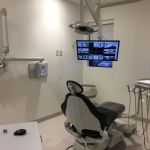- 1-Recognizing-Signs-of-Oral-Thrush-Infection
- 2-Common-Symptoms-of-Oral-Thrush-to-Watch-For
- 3-Effective-Treatment-Options-for-Oral-Thrush
- 4-Care-Strategies-to-Manage-and-Prevent-Oral-Thrush
- 5-Real-Life-Case-Studies-of-Oral-Thrush-Management
- 6-Professional-Advice-for-Oral-Thrush-Care
1. Recognizing Signs of Oral Thrush Infection
Oral thrush, a fungal infection caused by the Candida species, often begins subtly but can escalate quickly if untreated. Recognizing early signs of oral thrush infection symptoms is crucial for timely intervention. Common initial indicators include white, creamy patches inside the mouth, on the tongue, or inner cheeks, which may be painful or bleed when scraped.
Other signs include redness, soreness, difficulty swallowing, and a cotton-like feeling in the mouth. Understanding these symptoms helps individuals seek care early, preventing more severe complications.
2. Common Symptoms of Oral Thrush to Watch For
Besides visible white patches, symptoms can include cracking at the corners of the mouth (angular cheilitis), loss of taste, and discomfort during eating or speaking. Infants and immunocompromised individuals may experience more widespread symptoms, necessitating prompt medical attention.
Identifying these symptoms early allows for quicker treatment, reducing discomfort and avoiding spread.
3. Effective Treatment Options for Oral Thrush
Treatment typically involves antifungal medications such as nystatin, clotrimazole, or fluconazole. These can be administered as oral rinses, lozenges, or systemic pills depending on the severity. Consistency in following prescribed treatment is essential for success.
In addition, managing underlying conditions like diabetes or adjusting medications that contribute to fungal overgrowth enhances treatment effectiveness.
4. Care Strategies to Manage and Prevent Oral Thrush
Maintaining good oral hygiene by regular brushing, flossing, and disinfecting dental appliances reduces the risk of recurrence. Avoiding excessive sugar intake and smoking also helps limit fungal growth.
For those prone to oral thrush, rinsing the mouth after inhaled corticosteroid use and routine dental checkups support prevention.
5. Real-Life Case Studies of Oral Thrush Management
Jessica, a patient with recurring oral thrush, shared her story: “After multiple treatments, I learned that maintaining strict oral hygiene and controlling my diabetes were key to preventing flare-ups.” Her experience highlights how integrated care improves outcomes.
Such real-life accounts emphasize the importance of comprehensive management beyond medication.
6. Professional Advice for Oral Thrush Care
Dental professionals recommend early diagnosis and tailored treatment plans for oral thrush. Regular consultations help monitor progress and adjust therapies as needed.
For expert guidance, effective antifungal treatments, and oral care products designed to combat oral thrush, visit Dentistry Toothtruth to ensure your oral health is well-protected.







 Dr. David Newkirk - Cosmetic and General Dentistry5.0 (31 review)
Dr. David Newkirk - Cosmetic and General Dentistry5.0 (31 review) Smile Works Dentistry & Orthodontics in Lake Forest4.0 (35 review)
Smile Works Dentistry & Orthodontics in Lake Forest4.0 (35 review) Maple Brook Dental of MN4.0 (532 review)
Maple Brook Dental of MN4.0 (532 review) Frankfort Avenue Family Dental4.0 (405 review)
Frankfort Avenue Family Dental4.0 (405 review) Tender Smiles 4 Kids4.0 (450 review)
Tender Smiles 4 Kids4.0 (450 review) Bryn Mawr Dental Associates4.0 (493 review)
Bryn Mawr Dental Associates4.0 (493 review) The Importance of Oral Health Education During Pregnancy for a Healthy Pregnancy
The Importance of Oral Health Education During Pregnancy for a Healthy Pregnancy Best Tips for Brushing Your Teeth Properly for Healthy Gums: Essential Techniques for Oral Health
Best Tips for Brushing Your Teeth Properly for Healthy Gums: Essential Techniques for Oral Health Why Skipping Dental Checkups Can Lead to Bigger Oral Health Problems
Why Skipping Dental Checkups Can Lead to Bigger Oral Health Problems Advantages of Porcelain Dental Restorations
Advantages of Porcelain Dental Restorations How Can Diabetes Cause Tooth and Gum Problems? Preventing and Managing Oral Health Issues
How Can Diabetes Cause Tooth and Gum Problems? Preventing and Managing Oral Health Issues Healthy Habits for Promoting Good Oral Health and Hygiene: Tips for a Healthy Smile
Healthy Habits for Promoting Good Oral Health and Hygiene: Tips for a Healthy Smile